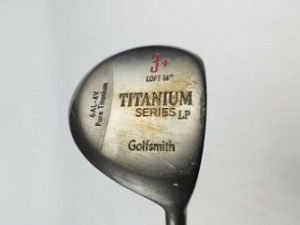Titanium golf shafts made a lot of buzz at their launch. But they enjoyed just a few years of glory. The sharp rise saw a sharp decline as well. There were a number of factors that caused them to be wiped out of the market.
But before we get into the declining factors let’s first discuss why they got popular.

Why Titanium Golf Shafts were Popular
Exotic Material
Anything made out of titanium has its own appeal. The metal is rare and is indeed an exotic material. It is hard to get by-products that have titanium used in them and then to have a shaft made out of titanium would have its own appeal.
John Daly’s Choice
Titanium clubs were used by John in the 1991 PGA Championship. John’s win gave them the spotlight they needed to penetrate the market. There were more in demand after the Championship as golfers always try to get what professionals have in their bags.
Daly was a legend with a very high club speed which covered the inherent flaws that came up with the titanium shot. An average golfer without proper technique would always struggle with them but Daly made them look very easy to play with.
The Buzz
Like today, also in the past golfers tend to buy equipment that has a buzz attached to it. Titanium but its name induces buzz into a product. Golf shafts made up of titanium made them class apart from steel which sounded ordinary when compared with Titanium.
No Common Internet
Yes, that is a factor. Because Titanium has its buzz it quickly got into golfers’ minds without digging even if they are worth playing with. Had there been easily accessible internet an average golfer would have known right from the beginning if golf shafts made up of titanium are any good.
Why Titanium Golf Shafts Got Wiped Off
Higher Weight
Titanium is relatively a lighter metal. In order to make it heavier for the reasons discussed more Titanium had to be used which increase the cost. Lighter shafts had a hollow feel after the impact. Another analogy would be the buzzy floating feeling in the follow-through. It took away the feel-good factor after the shot.
Difficult to Shape
Titanium shafts were just a nightmare for the manufacturers who had received fancy blueprints from the R&D. The metal is hard to shape into different designs. This made the manufacturing process longer and required more expertise. As a result, the titanium shafts were more expensive.
It would be easy to cast out the head of the shaft but the shaft itself would be difficult. The reason was to do the post-colding actions. A typical shaft would take a series of casting before it got into the required shape. Also after the cast was made expert would be required to smoothen the shaft without losing weight of the shaft. The whole process was lengthy and required a high level of expertise.
Competition with Graphite
In parallel, Titanium golf shafts had a competition with composite shafts such as Graphite. It is easier to shape and offers more weight per square centimeter. This took out the manufacturing difficulties from the manufacturers’ perspective. Although titanium shafts were better than steel but with the growing demand of graphite shafts, their need in the market was declining.
Lack of Flex
Feel-good factors play a very important role after a shot. Titanium shafts didn’t sound good and the lack of flex because of added weight made them undesirable. Golfers in the early 90s had already enjoyed clubs that provided better feedback. Playing with titanium shafts felt going a step back. As a result, it made little sense to do the transition toward a more expensive and less productive product line.
Expensive
Titanium shafts were more expensive for a number of reasons. The first is the exoticness of the metal itself. Second, the cost of skilled labor to shape the titanium into various design shapes. Another reason is the addition of more weight to take out the hollowness from the shaft. Lastly, it is difficult to acquire titanium as a raw material over a long period of production. That caused delays in production and a drop in revenue.
High Dispersion
Titanium iron sets looked and sounded cool but the dispersion of the set was pretty high. It was hard to get consistent results from the same set for a same player. This made players look for more forgiving and consistent sets. These iron sets were lacking in gaining the trust of good players. This was also one of the contributing factors which made the clubs lose their importance.
Final Thoughts
Titanium golf shafts enjoyed a very short window in the golf clubs market. They had their own feedback in the follow-through of a swing. I feel that modern technology has advanced a lot to use a proper metal shaft. But if today’s concepts are employed with the titanium shafts they can cover up the problems that come up with the titanium shafts. The cost for the whole exercise would still make titanium shafts very expensive.
In short, these shafts did not suit not only the manufacturers but also their customers.

